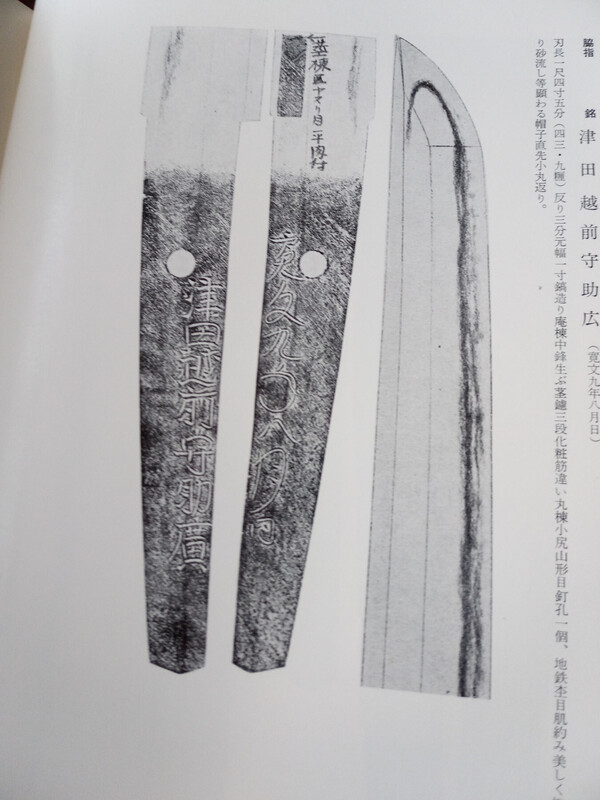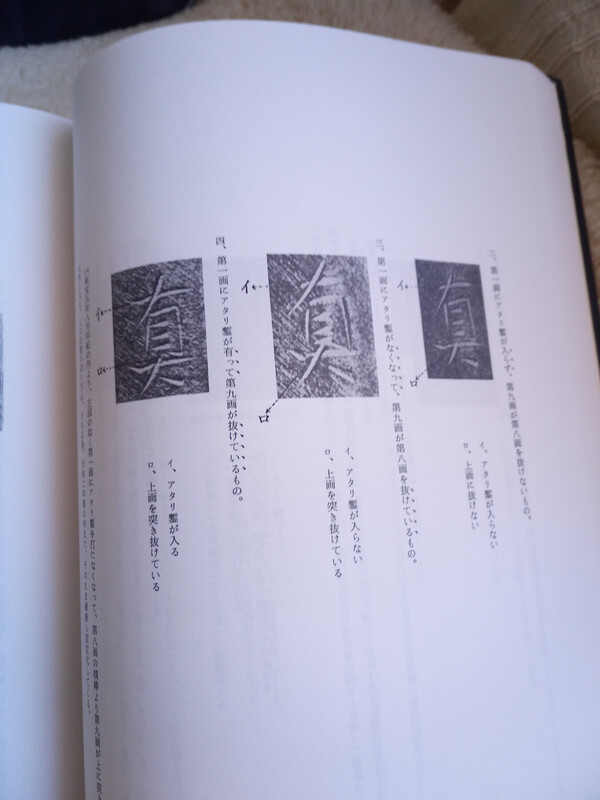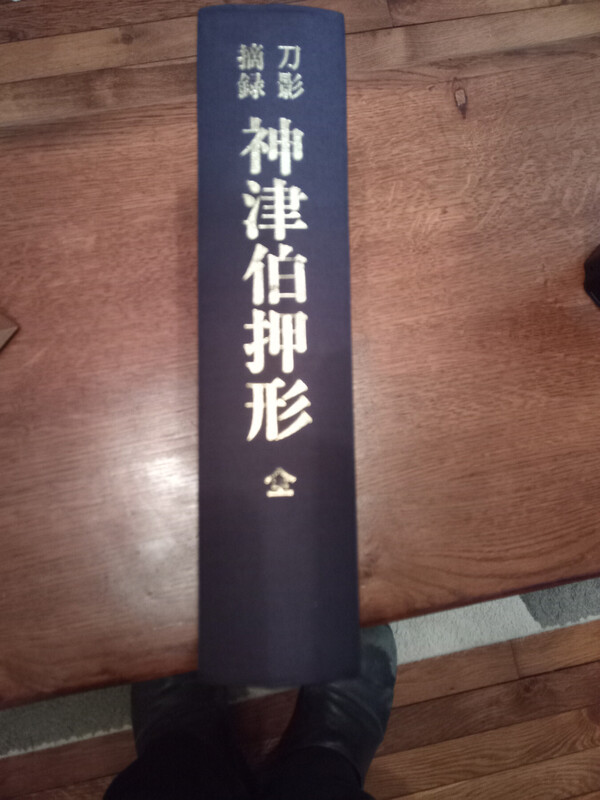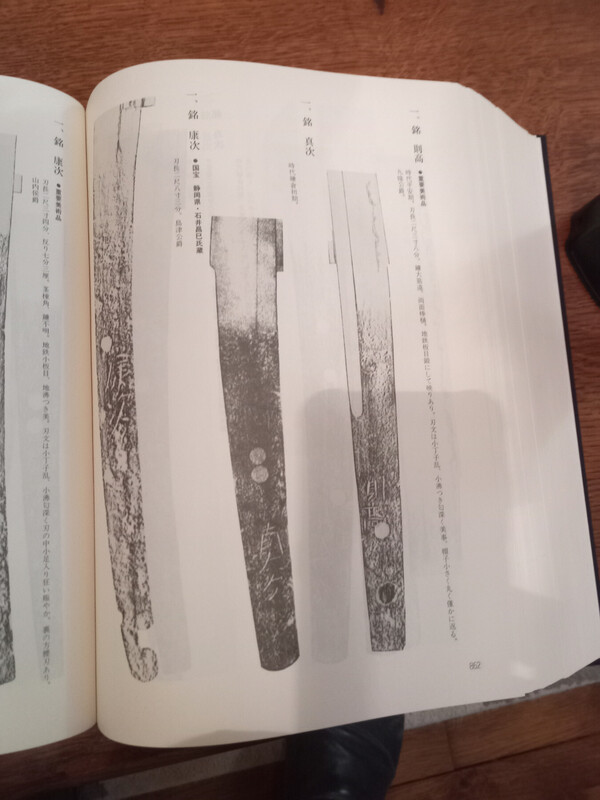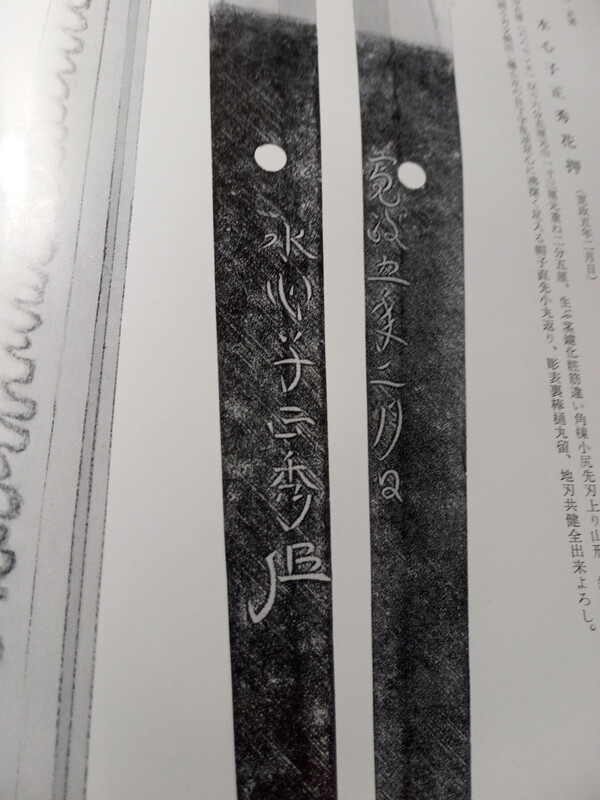
Jacques D.
Members-
Posts
3,593 -
Joined
-
Days Won
1
Content Type
Profiles
Forums
Events
Store
Downloads
Gallery
Everything posted by Jacques D.
-
-
-
You can't compare two signatures when they're engraved in different styles. That said, it's gimei. Same year
-
it must have at least one element notare. For example, if you find a sword signed Inoue Shinkai with a perfect suguha, it's 100% gimei.
-
No, only the design of the nioiguchi
-
No one with a little idea ?
-
Can anyone tell me which component is mandatory on Inoue Shinkai's hamon?
-
-
Wakizashi genuine signature/mei?
Jacques D. replied to VRGC's topic in General Nihonto Related Discussion
According to the Nihonto meikan : 神田住兼常 Kanda ju Kanetsune. Musashi 貞享 Jokyo 1684/1688 he signed also .Masateru 正照 Rated chu saku by Fujishiro wazamono. -
Yagyu shinkage-ryu swordmanship
Jacques D. replied to BIG's topic in General Nihonto Related Discussion
I own a french translation of the Heihö Kadensho written by Yagyû Munenori son of Yagyü Muneyoshi founder of the Yagyü-Shinkage Ryü. In this book there is nothing about Sword workmanship. -
katana translation request (late 1500s?)
Jacques D. replied to yellowquestion's topic in Translation Assistance
I don't know if this helps, but there were several Kiyomitsu working during the same period, which makes identification more difficult. -
katana translation request (late 1500s?)
Jacques D. replied to yellowquestion's topic in Translation Assistance
Bishu osafune Kiyomitsu saku 備州長船清光作, i let another one translate the date -
I'd love to know the process
-
-
Ok for that but no business in their purpose Purpose of the NBTHK Set in the past, the goals of the NBTHK are still valid today: Preservation and study of Japanese art swords To awaken understanding and spread knowledge concerning the Japanese art sword To identify, recognize and register the art swords according to their origin and qualification as important Japanese cultural assets and art objects Preparation of specialised studies on Japanese swordsmanship and its masters Works of art worthy of preservation also include the diverse objects of sword ornaments and sword mounts, such as koshirae, tsuba and the various associated parts of the kodogu https://www.nbthk.net/main_english
-
NBTHK is a government agency. I doubt it has a commercial purpose until proven otherwise.
-
The question is whether what you're saying is relevant; given your divinations, the answer is clearly negative.
-
I don't think you have any idea how much documentation the NBTHK has. I bought this book at the NBTHK museum 1200 pages, nothing but oshigatas and it's only an exemple
-
Bear in mind that there are 7 Soshu Masahiro (6 in Muromachi) and the hozon doesn't specify which one.
-
There are two reasons to see that sword is gimei : The first is that the way it's engraved (as shown by the osnigata I've provided) doesn't correspond to the Bunka period. The second is essentially to be found in the Masa kanji, whose base is always engraved in an angular manner, whatever the period. ps some are best ignored
-
-
Brian, In Masahide's mei, as in that of other smiths, there are characteristics that are permanent throughout the career, and knowing them helps to determine whether or not the mei in question is authentic, which is where a good library is important.
-
Christian You can't see the hamon, at most you can see the hadori. A hamon can only be seen in good lighting. the one below is fortunately in sashikomi polish
-
Perhaps you should explain why this sword is gimei (yes, it is); after all, the horimono may have been made by an amateur who didn't know who Masahide was (this is highly unlikely, of course, but, in absolute, it cannot be ruled out).
-
Colin, why are you trying to trick me? Either you understand the suriage process or you don't. if you do, you don't need to ask these questions.




